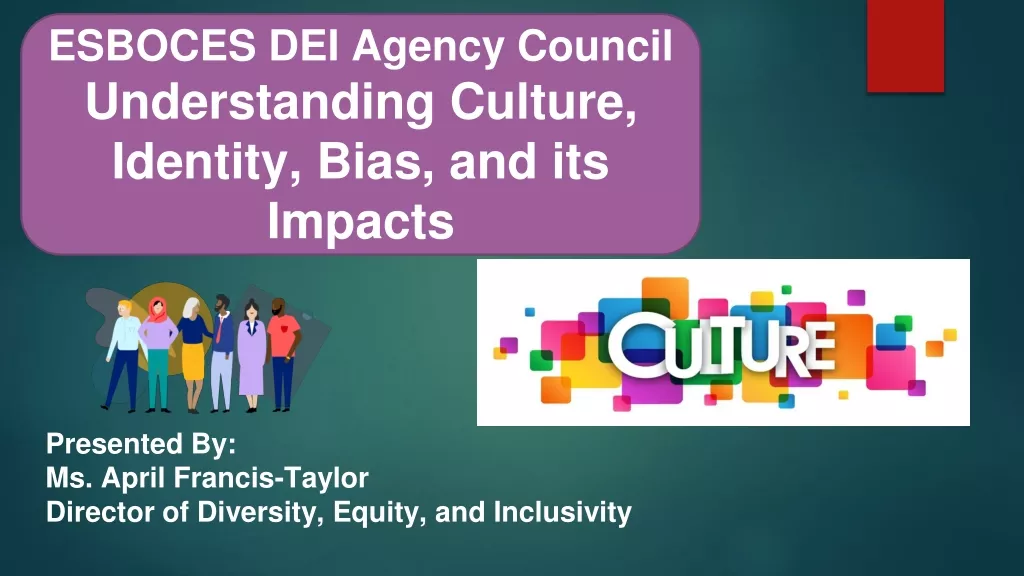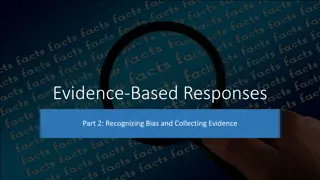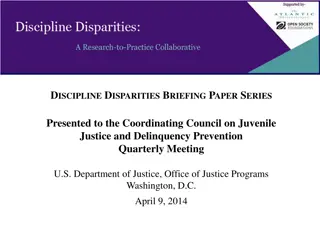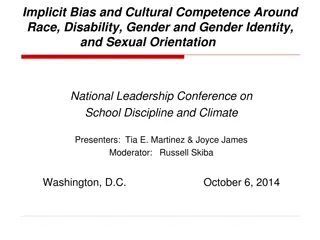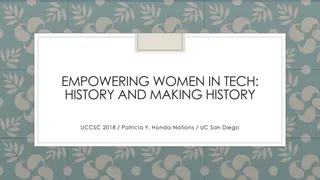Addressing Diversity Disparities in Tech Through Unconscious Bias Awareness
In the tech industry, diversity remains low despite its proven benefits in innovation and problem-solving. This presentation reveals shocking statistics on the underrepresentation of women and minority groups in computing fields. It emphasizes that societal bias, not inherent flaws in minority groups, is the root cause. The content stresses the importance of collaborative action to overcome these biases, highlighting research findings and societal challenges. It concludes with a call to acknowledge personal biases through projects like the Implicit Science and Gender Test from Harvard University.
Download Presentation

Please find below an Image/Link to download the presentation.
The content on the website is provided AS IS for your information and personal use only. It may not be sold, licensed, or shared on other websites without obtaining consent from the author.If you encounter any issues during the download, it is possible that the publisher has removed the file from their server.
You are allowed to download the files provided on this website for personal or commercial use, subject to the condition that they are used lawfully. All files are the property of their respective owners.
The content on the website is provided AS IS for your information and personal use only. It may not be sold, licensed, or shared on other websites without obtaining consent from the author.
E N D
Presentation Transcript
Introduction to Unconscious Bias, Innovation & Computing
DIVERSITY BENEFITS CREATIVITY Groups with greater diversity solve complex problems better and faster than homogenous groups. Scott Page, The difference: How the power of diversity creates better groups, firms, schools, and societies, Princeton University Press, 2009.
AND, YET DIVERSITY IN TECH IS LOW Women Comprise 57% of U.S. Professional Occupations Women Hold 25% of U.S. Computing Jobs Women Make Up 19% of U.S. Software Developers Women Make Up 15% of U.S. Computer Hardware Engineers Source: U.S. Dept of Labor Statistics, 2012 Current Population Survey
AND, YET DIVERSITY IN TECH IS LOW Black & Hispanic Professionals Comprise 16% of U.S. Professional Occupations, but 30% of U.S. Population Black & Hispanic Men Hold 9% of U.S. Computing Jobs Black & Hispanic Women Hold 4% of U.S. Computing Jobs Source: U.S. Dept of Labor Statistics, 2012 Current Population Survey
WHATS GOING ON? LET S CUT TO THE CHASE Minority groups aren t broken. Majority groups aren t the enemy. The culprit is societal bias (shared by both women and men) that manifests itself in technical cultures. We know what to do and should take action together.
QUICK REVIEW: WHAT THE RESEARCH SAYS
SOCIETY IS BIASED ABOUT GENDER AND TECHNOLOGY https://computer-engineer-barbie.herokuapp.com/
WE ARE BIASED AND MOST LIKELY, YOU ARE TOO Project Implicit Science and Gender Test Harvard University
WHAT CAUSES SOCIETAL BIAS? We all have shortcuts, or schemas, that help us make sense of the world. But our shortcuts sometimes make us misinterpret or miss things. That s unconscious bias. Video link
WE ALL BRING UNCONSCIOUS BIAS TO WORK ORGANIZATIONAL CULTURE SOCIETY SUBTLE DYNAMICS INSTITUTIONAL BARRIERS SCHEMAS/ UNCONSCIOUS BIASES EMPLOYEES
INTERRUPTING BIAS IN SUBTLE DYNAMICS: WHAT WOULD YOU DO OR SAY? You hear someone coach a colleague on how to get ahead, encouraging her to take it low and slow, meaning to lower her voice and speak more slowly. In the hall, a colleague mentions Ramira has potential, if only she could learn to tone it down a bit and not be so abrasive. You notice that someone is repeatedly interrupted in a meeting. While standing at the buffet at a company-catered event, you overhear someone ask a colleague of color for more coffee. You see someone getting credit for something another colleague said earlier in the meeting. You re sponsoring an employee who is unsure whether or not they should take on a risky assignment. You recommend an employee you re sponsoring for an opportunity, but get the response, we re not sure she s the right fit; she s not a natural leader. Work meetings typically include spirited discussion and argument, but Janelle consistently avoids engaging in that manner; instead, she prefers to respond via email later on. You hear someone say that there s been a push to hire more women (or other underrepresented groups) and that they are being hired over men or other groups, even when not as qualified.
ACTIVITY INSTRUCTIONS 1. Pick a scenario to work on or, create your own. 2. Generate two ideas for dealing with or intervening in this scenario. 3. Jot down questions you had while dealing with this scenario.


